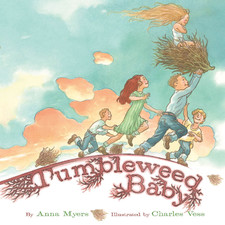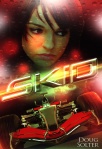Wrapping up the month-long celebration of our local SCBWI Oklahoma group, I’m going to share some of my insights from our Fall Retreat. It was a relaxed, 3-day event packed full of inspiring, helpful information.
The first day was all about craft. Which is something all writers are never too advanced to brush up on, if you ask me. There were so many great workshops, it was a harrowing decision just narrowing down the choices, let alone finalizing a selection.
 I sat in on a workshop by Anna Myers about point of view entitled “The Real Difference Between First and Third Person” where I learned that this difference is more than a matter of pronouns. To begin with, she told us that first person is the easiest and the hardest POV to write. It’s all about voice. Character drives the story in first person, in every word, in every sentence. “If you don’t have a strong voice, you shouldn’t write in first person.” Voice is still important in third person, but the story’s success is not as dependent on it. The great thing about third person is that not every word has to come from the viewpoint character. Anna walked us through a great exercise with a movie camera, demonstrating how the different aspects of third person – from third person intimate to third person distant – could move you in close or take you out wide of a scene, depending on how close you wanted the view to be – on how much you wanted the reader to experience.
I sat in on a workshop by Anna Myers about point of view entitled “The Real Difference Between First and Third Person” where I learned that this difference is more than a matter of pronouns. To begin with, she told us that first person is the easiest and the hardest POV to write. It’s all about voice. Character drives the story in first person, in every word, in every sentence. “If you don’t have a strong voice, you shouldn’t write in first person.” Voice is still important in third person, but the story’s success is not as dependent on it. The great thing about third person is that not every word has to come from the viewpoint character. Anna walked us through a great exercise with a movie camera, demonstrating how the different aspects of third person – from third person intimate to third person distant – could move you in close or take you out wide of a scene, depending on how close you wanted the view to be – on how much you wanted the reader to experience.
 In another craft workshop, this one led by Sonia Gensler entitled “Kidlit Romance and Friendship: Keeping it Real”, we learned how important it was to develop the main characters separately. You have to make the readers fall in love with the characters individually before asking readers to fall in love with them as a couple. “They must have an identity separate from the relationship.” Character is key. To attain this, Sonia suggests you start with an in-depth understanding of your characters before you start writing. It is especially helpful to know the answer to the fundamental question of what your character wants versus what your character needs. She gave the example from THE HUNGER GAMES using the main character Katniss. What she wants more than anything is to keep her sister safe. That is her motivation for volunteering as tribute in her sister’s place. But what she needs to survive in the games is to learn to let people in, to trust.
In another craft workshop, this one led by Sonia Gensler entitled “Kidlit Romance and Friendship: Keeping it Real”, we learned how important it was to develop the main characters separately. You have to make the readers fall in love with the characters individually before asking readers to fall in love with them as a couple. “They must have an identity separate from the relationship.” Character is key. To attain this, Sonia suggests you start with an in-depth understanding of your characters before you start writing. It is especially helpful to know the answer to the fundamental question of what your character wants versus what your character needs. She gave the example from THE HUNGER GAMES using the main character Katniss. What she wants more than anything is to keep her sister safe. That is her motivation for volunteering as tribute in her sister’s place. But what she needs to survive in the games is to learn to let people in, to trust.
Pati Hailey taught us in her workshop entitled “Building Memorable Worlds” that every story has a need for world-building elements, even those populated by ordinary humans. What makes a world memorable is when the elements of the world are put into perspective and introduced throughout the story. Elements need to be specific, authentic, and distinct. A great way to add some of these elements is through the use of similes and metaphors that are not cliché, but specific to your world. Use them as an opportunity to tell something about the character or the world. When describing a room, be specific. Don’t give a laundry list of items; give things meaning and connect them to a character. Also be more original with body movements – wide eyes and shoulder shrugs are over done. Pay attention to what people really do.
After a complete brain workout with the amazing crafts, our day wasn’t even finished, we got a little introduction to our wonderful featured speakers. I tell you, our SCBWI OK group knows how to spoil us.
Our first featured guest speaker was Minju Chang, literary agent with Book Stop Literary.
Minju comes from a small agency based in San Francisco that doesn’t do much advertising. They do work very collaboratively and they love SCBWI. She represents MG and YA of all genres and some PB as well. Minju was just brilliant and so enthusiastic about the business of books.
Minju said, “Rejection is inevitable.” She said she and her colleagues understand the frustration. They deal with rejections all the time as well.
She then decoded some editorial rejections for us:
“Not right for my list” This is an umbrella form rejection
“I love the idea, but I didn’t make a connection” View this as a bell curve. This means your manuscript is hitting the middle.
“I love this, but I couldn’t get my team on board” May have already tried to sell similar book and it wasn’t successful.
“I like the concept/character, but there’s not enough story” Quiet. This is a dangerous word. This means it’s difficult to sell.
Minju then said when she has a client receive this last type of rejection, she may suggest setting that manuscript aside to try again later. Maybe after they’ve made a bigger name for themselves and a quiet book won’t be so scary to publishers.
 Tracey Daniels from Media Masters Publicity was our next featured speaker.
Tracey Daniels from Media Masters Publicity was our next featured speaker.
She was there to teach us everything we didn’t know about publicity. That, my friends, was a lot. After talking with us for awhile about everything that goes into promoting a book and showing us all of the different social media options out there, she said the important thing was not to get overwhelmed. (Oh, I was overwhelmed. I didn’t recognize half of the social media logos. And there were at least thirty of them!)
You have to be realistic with your books and with your goals. Know yourself. Be honest about what you want to do to promote your book. Do what is right for you and your book. Not every book needs a big tour splash. The publicity budget your publisher allots for your book may not be as big as you’d like. You may have to invest some of your advance or your own money to do some publicity yourself. Whatever you decide to do on your own, make sure to communicate clearly with your publisher’s publicity department. You may be surprised how much they can help you.
The most important publicity tip she gave us was to create an on-going contact database. This should be a detailed excel spreadsheet with every industry contact you’ve ever made – past and present. This will be an invaluable tool as you move to the publicity/promotion part of your career. Be meticulous! Keep city, state, and zip codes in separate columns. This allows you to search your database by location.
She had so many fantastic ideas for making connections and generating ideas, it was astounding. I wish I could share them all with you.
Our second day was all about the featured speakers. We were finally introduced to our third speaker, Brett Duquette, editor with Sterling Publishing. His appearance was delayed due to the fire at the O’Hare airport, or rather the fire set at the traffic control center near Chicago that grounded hundreds of flights. Yes, that fire. Brett had a less than stellar travel experience and yet he was still in great spirits when he arrived. He was just delightful. (Even though he announced being a proud Cornhuskers fan while deep in Sooner country, I think we’ll still claim him as an honorary member of the SCBWI OK tribe.)
Brett spoke to us on the elusive subject of voice.

Voice, Brett said, is the cornerstone of the creation of the narrative. “Everything comes from the voice. It’s where we begin to build something out of nothing.”
Brett went on to explain that in his mind, all parts of the story are the voice, really. Narrative isn’t just the beige carpet, it has a voice, too. The language used is in harmony with the character, narrative, setting, etc. Each piece has a voice which adds up to the capital “V” Voice.
Most people forget about the narrative and when they are told they need to work on voice, they only focus on dialogue. Voice is so much more than that.
Consistency is key to voice and good writing. Without it, the story feels unreal or boring.
It’s much more apparent in illustration when voice doesn’t work. You see it immediately. To avoid this, you shouldn’t over explain the action in your text. Make sure to leave room for the illustrators. Brett brought out CHICKEN DANCE by Tammi Sauer. “This is perfect picture book writing because it allows the illustrator room to do their job.” Brett discussed a series of pages spreads where the chickens were trying to pick a talent for the talent contest.
Bowling was out. So was juggling. And tightrope walking.
With concise language choices, Tammi set up the joke and let the illustrator deliver it.
Much to his surprise, Tammi was in the audience, just a few feet away. Brett then said it was a good thing he only had nice things to say about her book. It was a fantastic moment to witness. Then it was back to business.
He said the way you learn to do what Tammi did, to leave those spaces for the illustrator to be creative and tell part of the story, is you have faith that the editors will be able to envision a great book and the illustrator can do their job and create great illustrations.
Brett had so many great writing exercises for us to work through to help us really understand what he was telling us. It was an awesome session on voice with a capital “A”.

The final day was for wrapping up, a speaker panel, and for saying goodbye. Some goodbyes were more tearful than others.
Our dynamic leader of 14 years, Anna Myers, passed the torch on to Helen Newton with many tears spilled, but not before she received some love back in return. We all pitched in a gave her a quilt made with all 20 of her book covers on it, including her latest release, her first picture book. Anna will still be a part of our SCBWI OK family as an Regional Advisor Emeritus.
Although I don’t see how this retreat could ever be topped, it wouldn’t surprise me in the least if the next one was even better.
If you somehow missed this awe-inspiring event, make sure to mark your calendars now for the spring conference on March 28, 2015. You will not want to miss it.
Thank you to all of our guest speakers who traveled so far to be with us and to all of our fantastic local talent that made the craft day such a wonderful success. I learned tons of new information that will stick with me and I know I’m not alone there. This great event wouldn’t have been possible without all of you.

























